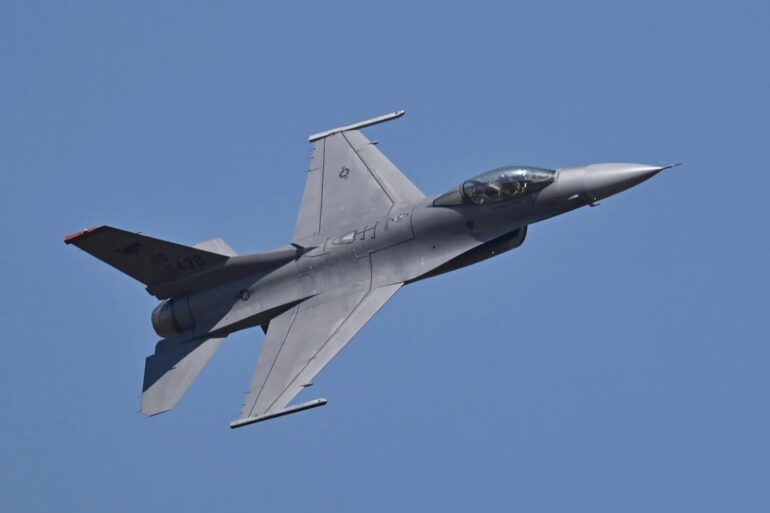- DARPA pioneers AI applications in defense with AI-enabled F-16s, emphasizing reliability and trustworthiness.
- The initiative aims to prevent strategic surprises by adversaries while fostering DARPA’s own technological edge.
- Matt Turek underscores the importance of implicit trust in AI systems, especially in life-or-death situations.
- DARPA solicits transformative capabilities through challenges, like the Artificial Intelligence Cyber Challenge.
- Collaboration with industry giants like Google, Microsoft, and OpenAI accelerates AI innovation.
- DARPA’s experimentation with AI-controlled F-16s showcases advancements in autonomous systems.
- Challenges remain, including the opacity of AI decision-making, which is addressed through efforts to enhance interpretability.
- Strategic vigilance and sustained investment in AI research are imperative for DARPA’s continued leadership.
Main AI News:
In a bold move towards enhancing the Defense Department’s reliance on artificial intelligence (AI), the Defense Advanced Research Projects Agency (DARPA) has taken to the skies with AI-enabled F-16s. This groundbreaking initiative, often dubbed as zero-trust, epitomizes DARPA’s commitment to bolstering AI’s reliability across diverse scenarios. Central to DARPA’s endeavors is the cultivation of trustworthy AI systems capable of aligning decisions with human intent and ethical precepts, which are critical considerations, especially in life-or-death situations.
The urgency behind AI advancement stems from the imperative to avert potential technological breakthroughs by adversaries, thus evading “strategic surprises.” DARPA not only seeks to forestall such occurrences but also endeavors to orchestrate its strategic surprises, positioning itself as a formidable force in technological innovation within the defense domain.
At the helm of DARPA’s technological crusade stands Matt Turek, the deputy director of DARPA’s Information Innovation Office, who underscores the paramount importance of fostering implicit trust in AI systems, particularly in scenarios involving human lives.
To realize its vision, DARPA actively solicits transformative capabilities from both industry and academia, leveraging challenges as conduits for innovation acquisition. One such exemplar is the Artificial Intelligence Cyber Challenge, wherein DARPA harnesses generative AI technologies to fortify open-source software against vulnerabilities, including those critical to infrastructure integrity.
These initiatives not only bolster defense capabilities but also promise ripple effects across commercial sectors. Notably, DARPA’s experimentation with AI-controlled F-16 fighter jets in partnership with the Air Force epitomizes the agency’s relentless pursuit of pushing autonomous systems to their limits in complex operational milieus.
DARPA’s quest for trustworthy AI resonates deeply within both defense and commercial realms, underlining the pivotal role of strategic partnerships and innovative challenges in propelling AI and machine learning into uncharted territories. However, amidst commendable strides, challenges loom large on the path to creating AI systems capable of navigating life-or-death scenarios with unwavering trust.
Chief among these challenges is the inherent opacity of AI decision-making, often shrouded in a “black box,” thereby eroding trust and impeding seamless integration into operational workflows. DARPA’s concerted efforts to imbue AI models with interpretability and explainability signify a crucial step towards overcoming this hurdle. Moreover, the specter of strategic surprises underscores the imperative for relentless vigilance and sustained investment in AI research and development, ensuring that DARPA remains at the vanguard of technological innovation, safeguarding national interests in an era defined by unprecedented technological dynamism.
Conclusion:
DARPA’s relentless pursuit of trustworthy AI solutions not only fortifies defense capabilities but also catalyzes innovation across commercial sectors. The agency’s strategic partnerships and innovative challenges underscore its pivotal role in shaping the future of AI, positioning DARPA as a driving force in navigating the complexities of an increasingly AI-centric landscape. Businesses must heed DARPA’s advancements, recognizing the imperative for trustworthiness and transparency in AI systems to remain competitive in a rapidly evolving market.

